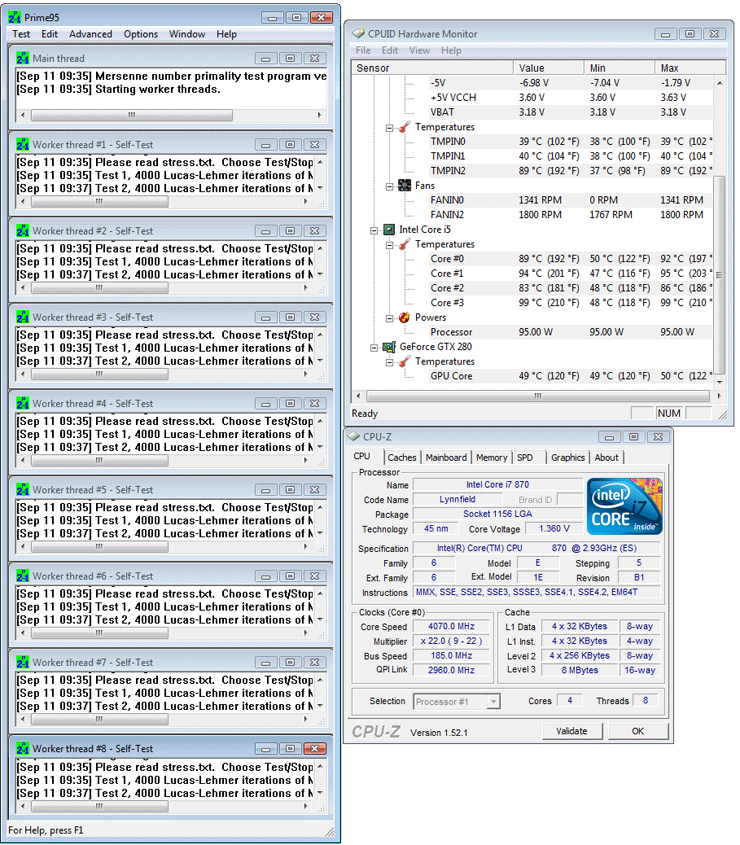Overclocking
Overclocking
With a little time and trial you can certainly achieve an okay overclock. For this test run we overclocked a Core i7 870. The overclock you'll see is 100% stable.
So with the Front Side Bus officially annihilated, things tend to change a little while overclocking a Nehalem based processor. Only a little though. It's a little weird but the concept remains the same. In the BIOS you'll find a 133 MHz register, the BASE CPU clock... look at that as your 'FSB' to play around with. Of course, with an Extreme Edition processor, things would be much easier, unfortunately this is not the case with today's launched processors.
All three processors released today are multiplier locked, meaning your starting point is to select the highest possible multiplier in the BIOS and then increase that base clock
Core i7 870 overclocking
First up for this processor, check what your current maximum multiplier values are. We again fire of a much higher base clock to that multiplier of 22.
As such we where able to overclock the Core i7 870 processor to 4.1 GHz (!) with a Thermalright MUX 120 air cooler. Here's what we did:
- Disable Turbo mode
- Set maximum processor multiplier
- Lower QPI divider
- Increase processor voltage a little bit too, at 1.42 Volts
- Lower memory multiplier to maximum stable memory frequency
- Increase CPU base frequency
We maxed out at 22x 185= 4070 MHz. Now I say maxed out here, but the processor and motherboard could have gone faster. We had to forfeit due to CPU temperatures getting way out of control.
When we stress the CPU cores with prime 95, temperatures now rise to 99 Degrees C on one core (210F) which really is wahaaaay too high. But still, not bad for a heatpipe based cooler !

